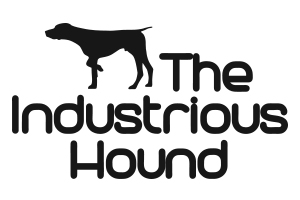'Fear' and nervousness
This article was originally written about reactions to loud noises, but the principles apply to most other ‘fear’ or ‘nervous’ reactions.
New Year’s Eve brings the bangs and whizzes of fireworks - are you and your dog ready?
For some dogs, fireworks can be terrifying. The usual warnings will be given to keep pets indoors – good advice – but local councils will pick up dogs that took fright and take them to the pound before they are reunited with their owners.
But does it really need to be like this every year? While your dog might not love the noise, this season need not be a misery.
In a relatively short time, by adapting your behaviour, and creating some training opportunities, you can make a real difference.
The answer lies in how you behave, how you react and how you communicate with your dog when they look to you – another member of the pack – for guidance.
Like most of us, dogs are surprised when they hear a loud noise, like fireworks. They look around to the rest of the pack to help them assess whether they should be afraid, or not.
If you think about it, what is really so frightening about fireworks anyway? Well, nothing, of course!
Loud and ‘unpleasant’ noises can be very pleasant if they are associated with something enjoyable. The clanging and banging of a metal bowl will bring a dog running at feeding time. And dogs trained to retrieve in the field will happily stand by a 12 bore being fired at scattering rabbits followed by the fun of retrieving game.
The road to hell - and fear of fireworks - is paved with good intentions
No one would intentionally teach their dog to be afraid of anything, but it’s too easy because we are human, and, well, dogs are dogs! We communicate differently. Here's how:
Let’s imagine you have a young dog who has yet to experience his first firework display. He is not born with a fear of that noise but it is outside his experience of the world so far.
BANG! He flinches – it was loud and different. He might even be a little shocked and want to hide. He looks to other pack members to see if this new occurrence is safe and everyday, or threatening and dangerous.
Well-intended, you try to soothe the dog with a ‘there, there, don’t be afraid!’ But if there were nothing to fear, other pack members would do nothing. Your attempts to calm and soothe unfortunately do the opposite of what you intended. All the dog understands is that all is not well and you are afraid.
Now you think your dog is afraid of fireworks. The dog becomes more stressed with every bang, and with every attempt to soothe. Instead you unintentionally reinforce the fear with your behaviour.
Some actions you can take to reduce your dog’s fear:
Communicating with your dog in ways he understands shows real love for the dog. Communicating like a dog and combining simple and practical techniques for effectively leading your pack with positive reinforcement can begin to eliminate learnt fears.
What you focus on, expands
BOOM! Your dog may well flinch and look to you. Remember, what you focus on expands: do not make eye contact with the dog, do not make physical contact with the dog, do not talk to the dog. The event was as eventful as bird song. Nothing to see here! Carry on as though nothing were happening. Nothing is happening! Walk around the house, do the dishes, make a cup of tea, read a magazine.
You might walk into the garden. Don’t ‘coax’ him to follow. Don’t force him to follow. Sit outside and watch the show, calmly and quietly. If he hides behind your legs, move. If he hides under the chair, move the chair and yourself. If he jumps on your lap, gently push him off. If your dog hides behind you, move away.
Create at least not negative associations!
It can be tricky to create positive associations with random or rare events. Sometimes, a positive association is simply not a negative one (from the dog’s perspective, not yours!) and so might mean no acknowledgement.
If you are expecting a firework display, you might save feeding time until that time, or offer a high value titbit with each bang. If your dog’s anxiety is high, he is unlikely to want to eat, so if he refuses that’s fine.
Associate loud noises with reward, or at least no acknowledgement. For example, at feeding times, you might clap your hands loudly once when you put food down, or drop a bin lid on concrete, or bang pots together, or start the vacuum cleaner, for example. What matters most is your reaction.
Your dog’s behaviour didn’t happen over night, but with time, patience and consistent effort you can both begin to live free of fear.





